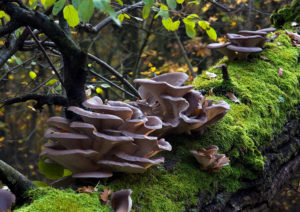General description of project area
Name of the project area: Tihany
Surface area (ha): 116.610
EU protection status SPA: NATURA 2000 Code 30001
EU protection status SCI: NATURA 2000 Code HUBF 20006 Tihanyi-félsziget
Other protection status according to national or regional legislation: National Park
The main uses of the project site: The main land uses: Nature Conservation 80%, tourism 10%, forestry 10%
The ownership status: Sate property 100%

Scientific description of project area
The extent of Tihany peninsula is only 12 km2, however it is the most diverse and valuable part of the Balaton Upland.
The very diverse surface over the complex vulcanic (basalt, pyroclast) and postvulcanic (Geyserite)bedrock under the sub-Mediterranean climate is covered by mainly 91H0*Pannonian woods with Quercus pubescens (75%), but there are 91M0 Pannonian-Balkanic turkey oak –sessile oak forests (18%) and in small patches 91G0* Quercus petraea and Carpinus betulus in the northern slopes along the interior lakes. There was wooded meadow in some part of the area. The reforestation of this wooded meadow started 80 years ago what has resulted a diverse forest in age and structure, however sometimes alien Pinus nigra was also planted. In the old Pinus nigra forest some native tree species started to regenerate, but this process must be supported. Some invasive species, such as Robinia pseudoacacia and Aillanthus altissima spread over the area.
In the project area there are some mosaics of 6110*Rupicolous calcareous or basophilic grasslands of the Alysso-Sedion albi, 6240* Sub-Pannonic steppic grasslands and 6190 Rupicolous pannonic grasslands (Stipo-Festucetalia pallentis).
Characteristic plans are: Gagea bohemica, Scilla autumnalis and Sternbergia colchiciflora,
Characteristic animals are:
Mammals: Myotis myotis,
Birds: Dendrocopos medius, Dendrocopos minor, Dryocopus martius, Picus canus, Picus viridis, Otus
scops;
Incects: Cerambyx cerdo, Lucanus cervus
Importance of the project area for biodiversity and/or for the conservation of the species /habitat types targeted at regional, national and EU level
The project area is important for the improvement and extension of 91H0*Pannonian woods with Quercus pubescens habitat which is an EU priority habitat according to Annex I. of the Habitat Directives. It is also important for the elimination of the invasive Robinia pseudoacacia and Aillanthus
altissima species. The restoration of the area will be an example in the region for other forest managers.
Flagship species in project area
Volvariella bombycina, Megascolia maculata, Glis glis